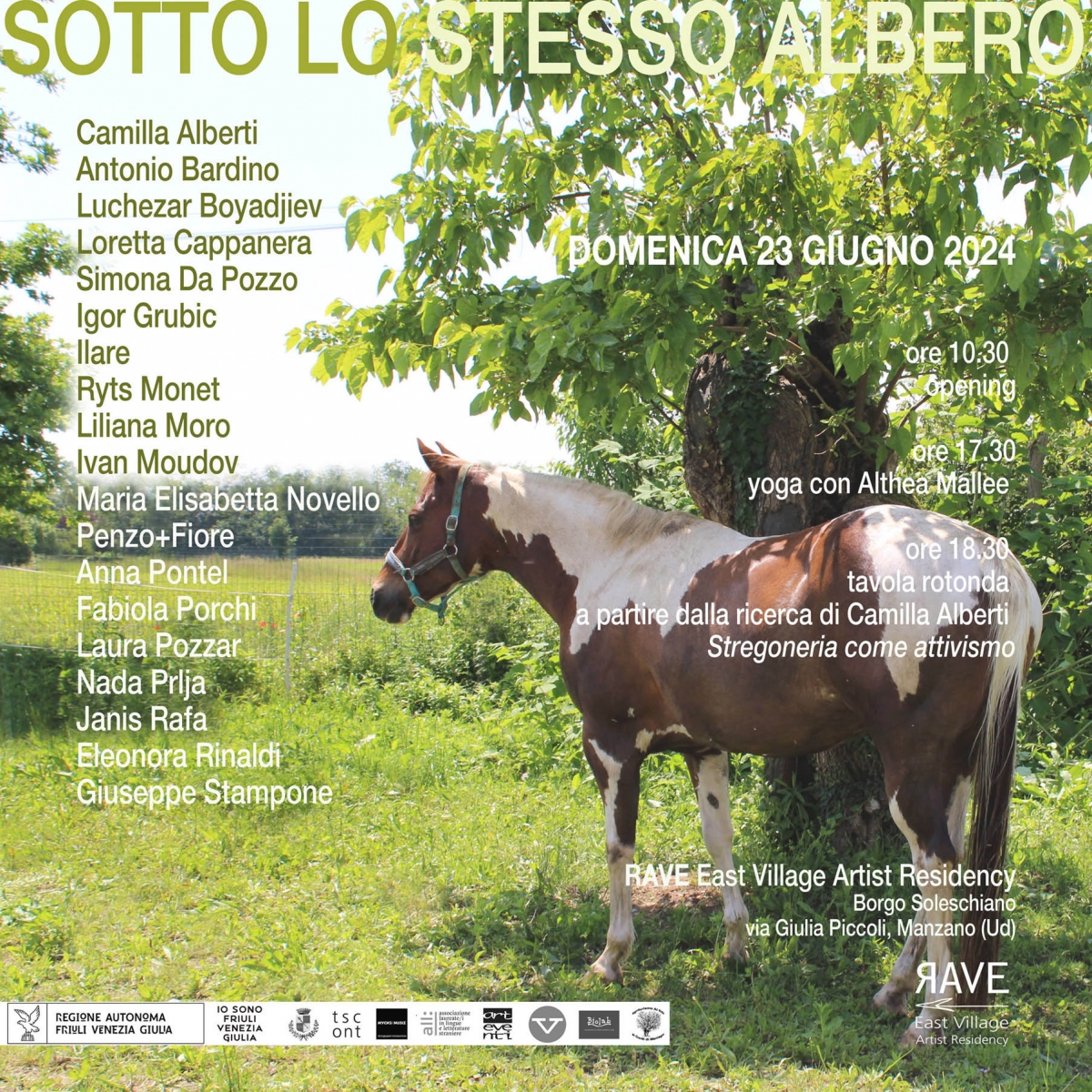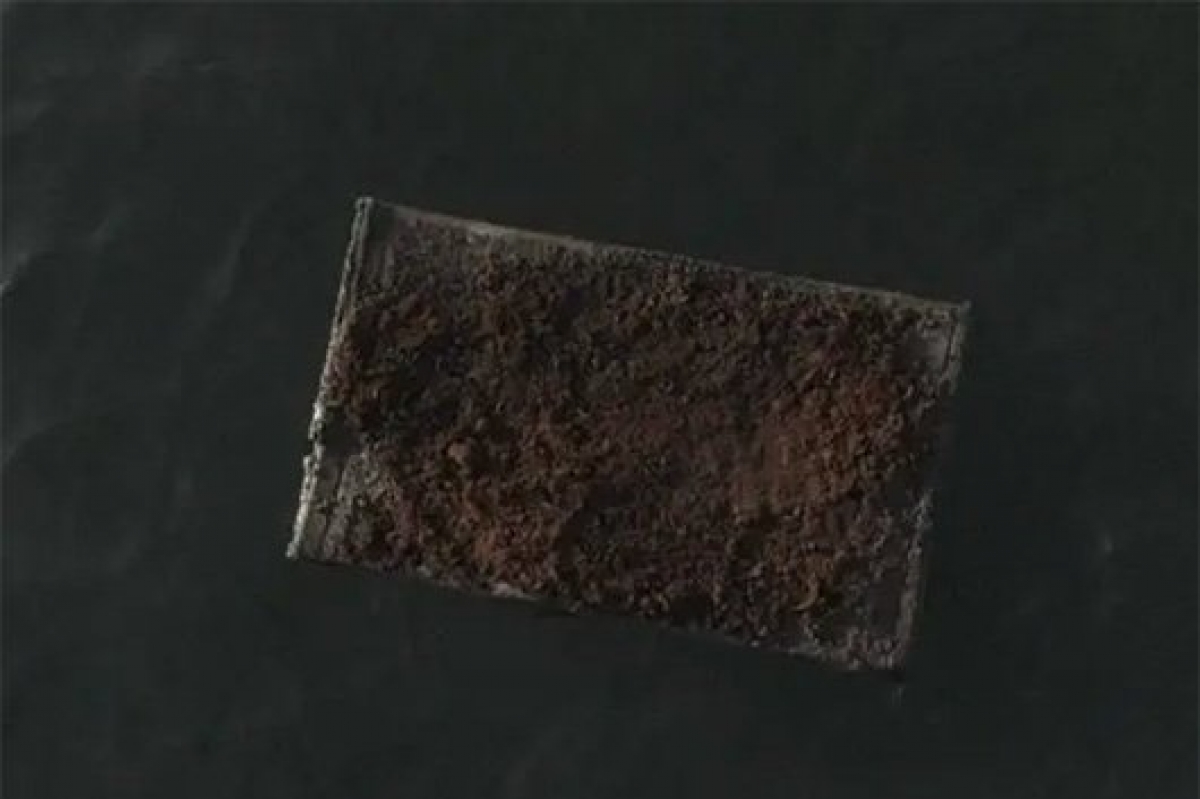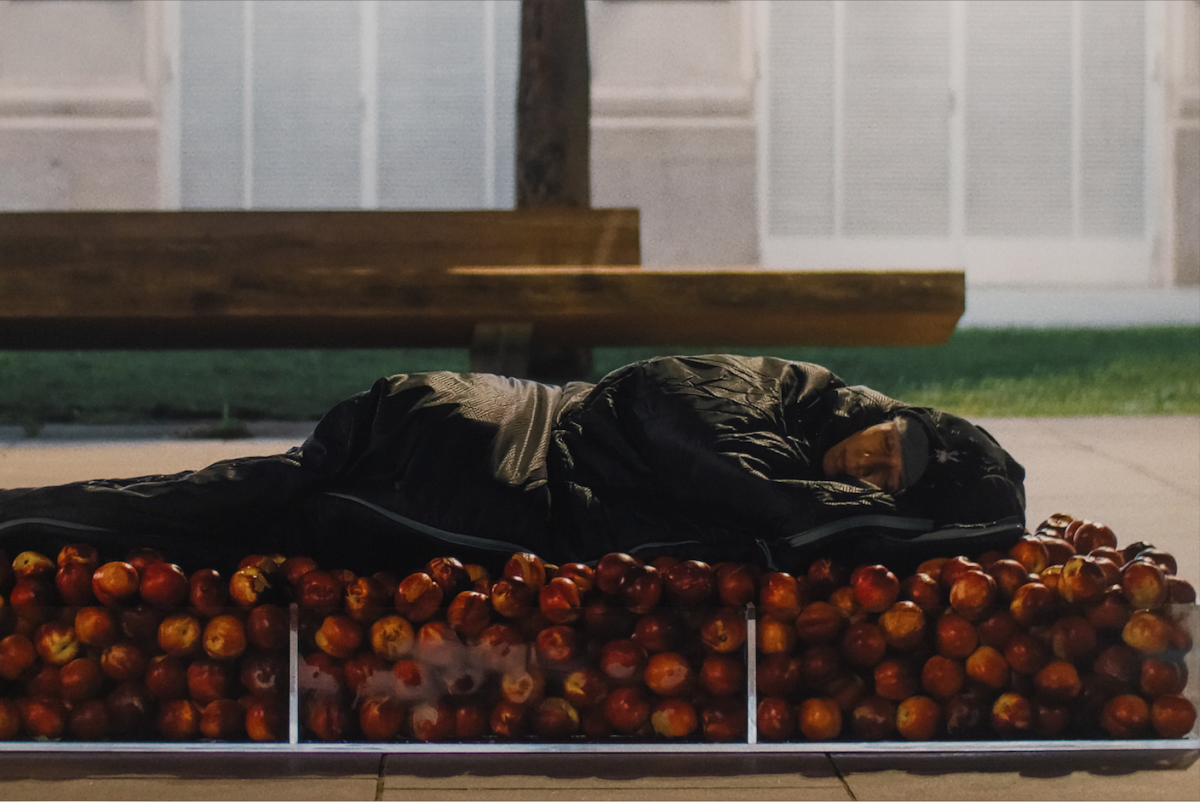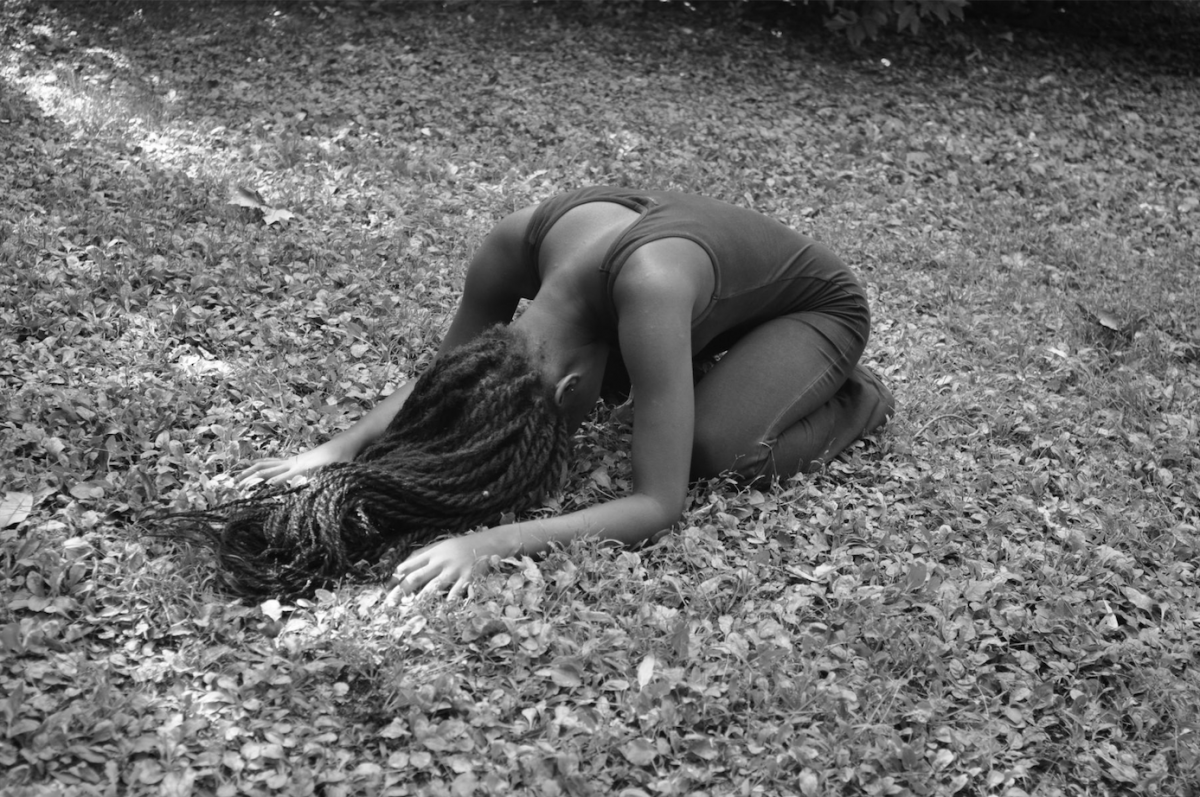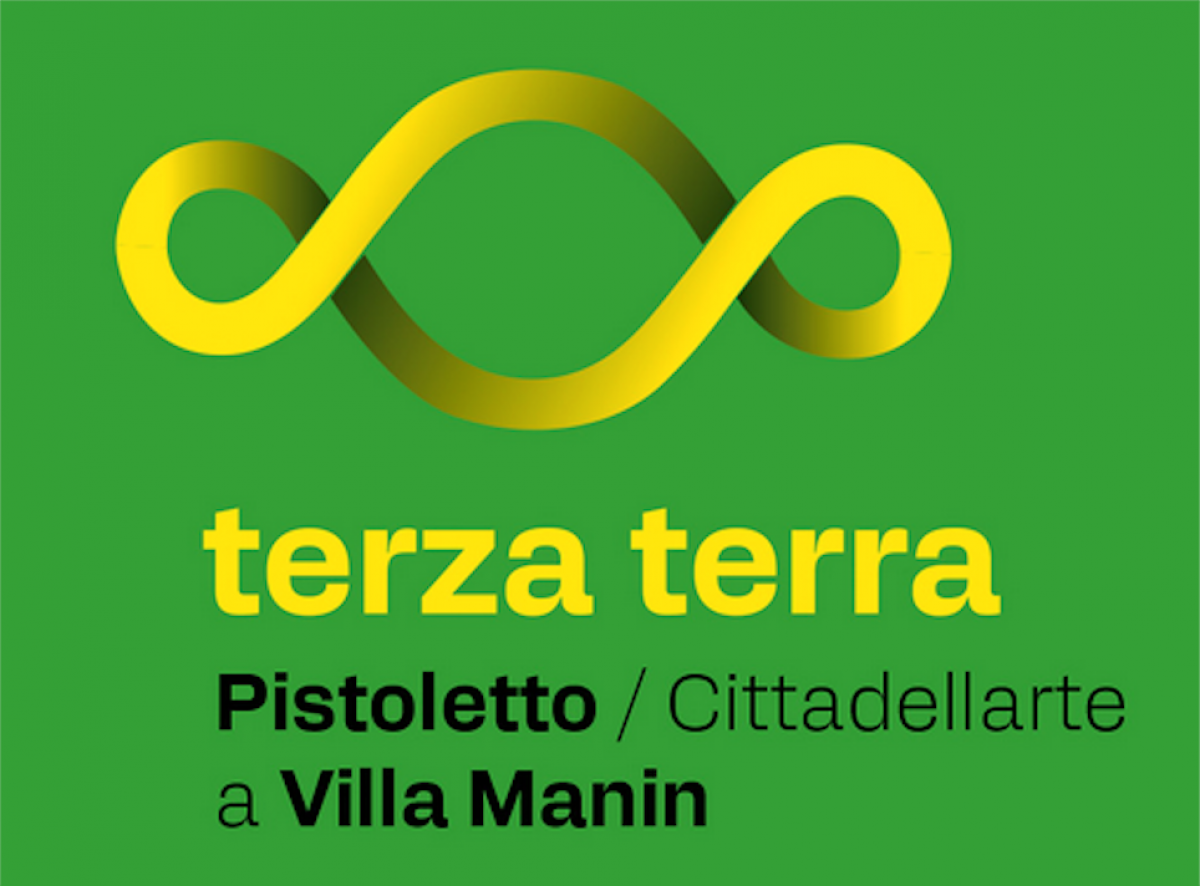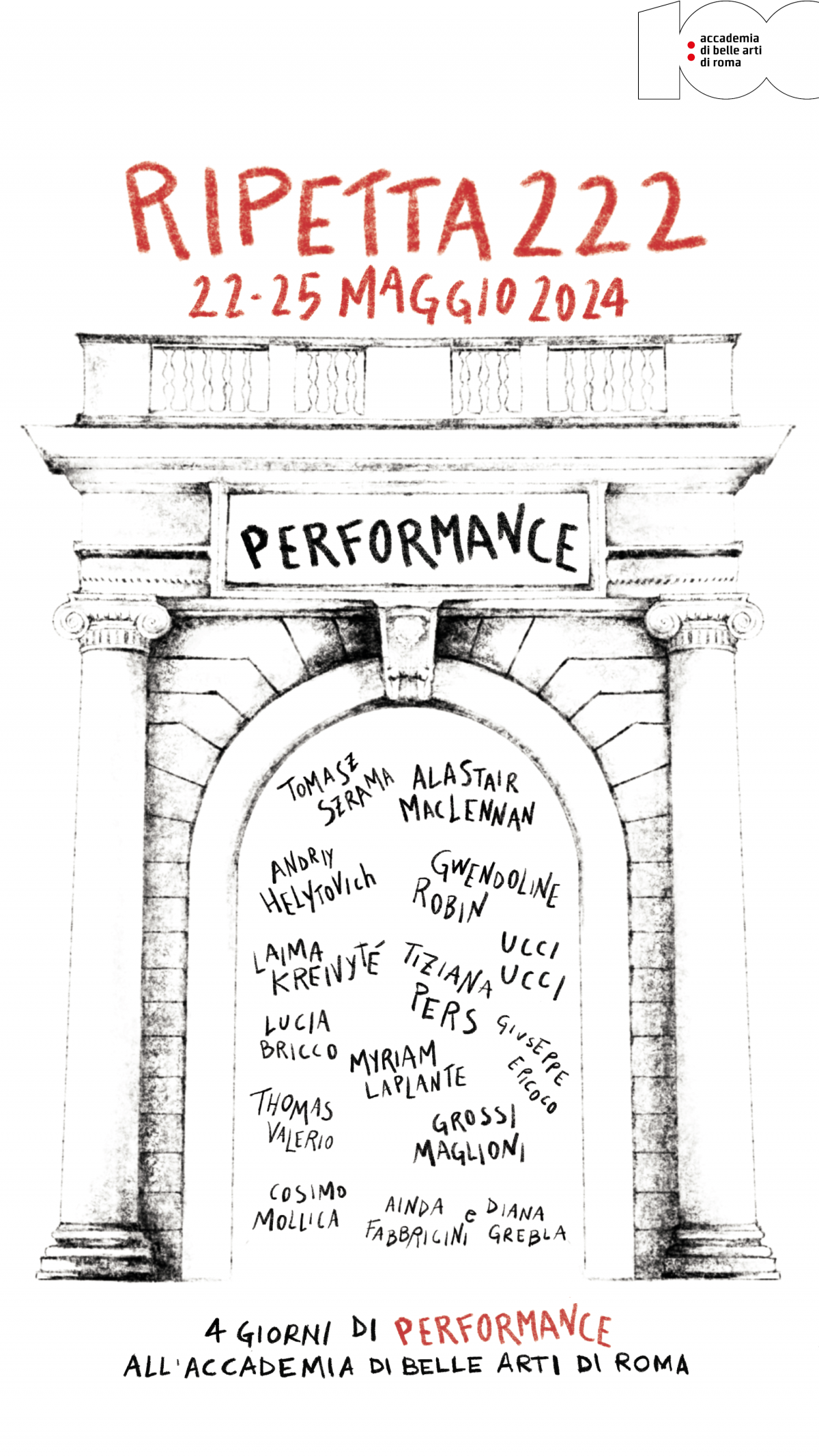I cookie ci aiutano a fornire i nostri servizi. Utilizzando tali servizi, accetti l'utilizzo dei cookie da parte nostra.
Angela Maria Fiore, Vladimir Kartashov, Francesca Perrone, Ingrid Piccinini
WHERE THE WILD ROSES GROW
Text by Alessandro Romanini
Opening
Thursday, May 16, 2024
from 6:00PM until 9:00PM
PROMETEO GALLERY IDA PISANI, Milan
Via G. Ventura 6 - Via Massimiano
20134 Milan
Text by Alessandro Romanini
Opening
Thursday, May 16, 2024
from 6:00PM until 9:00PM
PROMETEO GALLERY IDA PISANI, Milan
Via G. Ventura 6 - Via Massimiano
20134 Milan
On the 23rd of June from 10:30 a.m., RAVE 2024 comes to life with the opening of the collective exhibition Under the same tree, within which the research residency of artist Camilla Alberti will be included.
The exhibition is physically rooted in the historic village of Soleschiano di Manzano, among the old stone houses and centuries-old plants.
The participating artists are: Camilla Alberti, Antonio Bardino, Luchezar Boyadjiev, Loretta Cappanera, Simona Da Pozzo, Igor Grubić, Ilare, Ryts Monet, Liliana Moro, Ivan Moudov, Maria Elisabetta Novello, Penzo+Fiore, Anna Pontel, Fabiola Porchi, Laura Pozzar, Nada Prlja, Janis Rafa, Eleonora Rinaldi, Giuseppe Stampone.
The exhibition develops from sharing space and spending time with the animals and trees rescued and sheltered at RAVE, investigating contemporary posthuman and anti-human theories. The works, some already part of the RAVE collection, address the urgencies of our time, from environmental emergencies to the need to rethink ourselves as individuals and as species in relation to the rest of the living world through gazes of coexistence.
Deconstructing the dominant perspective axes turns out to be a complex exercise because of the multitude of imaginaries it traverses. This is precisely why the exhibition is articulated through the use of different media and the participation of artists with different paths and processualities. The works will be on view in different places around the village until September.
[...]
A panel discussion will take place at 6:30 p.m. Starting with the research that artist Camilla Alberti will initiate at RAVE, on the theme of witchcraft as activism: can the study of rituals, magical practices, tools, talismans, narratives, constitute themselves as co The panel discussion will feature artist-in-residence Camilla Alberti, anthropologist Erika Di Bortolo Mel, philosopher Leonardo Caffo, and curators Eva Comuzzi, Martina Macchia, and Susanna Ravelli. RAVE co-founder artist Isabella Pers will introduce the event.unter-processes capable of building a solid and effective imaginary to re-emerge from the pit of anthropocentrism? [
...]
curated by Ilaria Bernardi
Fondazione Sandretto Re Rebaudengo
June 20 – October 13, 2024
Exhibition co-organized and co-produced by the Fondazione Sandretto Re Rebaudengo and Associazione Genesi, for the third edition of Progetto Genesi. Art and Human Rights, a project supported by Associazione Genesi.
Opening June 20, 2024 at 7pm, the Fondazione Sandretto Re Rebaudengo presents the solo exhibition of Binta Diaw (Milan, 1995), curated by Ilaria Bernardi and co-organized and co-produced by the Fondazione Sandretto Re Rebaudengo and Associazione Genesi.
The project is conceived as a multisensorial immersion into the complexities of migration and its history between two continents: Africa and Europe. Migration, a politically and economically urgent issue, is also a profoundly philosophical one, in which identity, heritage, and imagination are intertwined.
Since the beginning of her practice, Binta Diaw has been interested in the movement of people over time, whether voluntary or forced, official or unofficial. Of particular interest to the artist is the idea of the diaspora, which characterizes her own background, born in Italy to Senegalese parents. Diaw further develops her conception of diaspora beyond the idea of a physical or symbolic displacement—and the difficulties of uprooting and re-establishing oneself that come alongside—to posit diaspora as a state in which “we can be many at once,” building on Edouard Glissant’s words that “every diaspora is the passage from unity to multiplicity.” Fittingly then, perhaps, diaspora not only serves as an entry point for the artist to delve into the history of migration in Africa, but also as a point of departure for her to follow the “African tendency to journey elsewhere.”
As part of Progetto Genesi at the Fondazione Sandretto Re Rebaudengo, Binta Diaw has created an immersive installation that addresses the theme of migration, centered on the migrant body and its sensitivity to nature and the surrounding culture.
Filmed in Yarakh, Senegal and conceived of as a visual meditation on the ocean, a video is projected onto the back wall of the gallery. The camera focuses on the water and the waves that form offshore. Lampedusa—an island at the crossroads between two continents—appears in the distance. A dark mass, shaped like a rectangle, oscillates against the winds and waters. This form is revealed to be a rug woven out of dirt, underlining the semantic richness of the phrase “this is my land”—referring to the place that we either choose for ourselves or is chosen for us, particularly in relation to Africa and its colonial history. On the ground are several small identical sculptures made out of dirt, placed upon two large sheets of plastic recalling the rug in the video as well as ocean pollution. Altogether, the installation speaks to the way in which people and their stories are reduced to mere numbers and seen as indistinguishable upon their arrival in Europe.
The artist explains, “I filmed this video in the outlying district of Yarakh in Dakar, in the attempt to draw attention to the site of departure, and to the departure itself, of the people who decide to leave from that point. By now, migration has been generalized into a single image: disembarkment and invasion. But we don’t ask ourselves and we don’t stop to think about their starting point, about the suffering that they come from, and above all, how they were able to face their journey. The video is therefore a metaphor of the body awaiting its fate: an invitation from the ocean that welcomes the body into its waters until it is thrown out. The rug—long associated with notions of hospitality and spirituality in some cultures—becomes a metaphor for the migrant body, of the body in movement—not only from one place to another, but also from a physical and mental state to another.”
The exhibition is accompanied by a monograph on the artist, edited by Ilaria Bernardi, published by Silvana Editoriale, and produced by Associazione Genesi. The publication is the first survey of the artist’s work to date.
This exhibition is the third edition of Progetto Genesis. Art and Human Rights, curated by Ilaria Bernardi and supported by the Genesi Association since 2021. Founded with the idea that contemporary art can serve as an emissary, the project connects exhibitions to education with the goal of providing an ongoing dialogue about human rights. Interdisciplinary, itinerant, and inclusive, Progetto Genesi is unique in its radical commitment, as well as breadth and depth of initiatives—not only within the contemporary arts in Italy, but worldwide.
On the occasion of this exhibition highlighting the important work of Binta Diaw, the Fondazione Sandretto Re Rebaudengo will also present two additional projects by the artist, both curated by its Senior Curator Bernardo Follini. The first is a wallpaper featuring one of the works from Diaw’s Paysages Corporels series, on view at Palazzo Re Rebaudengo in Guarene starting June 18; the second is an exhibition at the Palazzo Banca d’Alba, on view from June 14 to July 21, presenting well known works by the artist previously exhibited in major shows.
DESCOLONICEMOS EL MUNDO
Solo Show
15.06.2024 — 29.09.2024
Performance: 13.06.2024
CENTRE D’ART LA PANERA, Lleida
Curated by Semíramis González
FRUTA AMARGA Performance:
Thursday 13th June, 00.00 - 7.00
Ramon Berenguer IV Square (Lleida-Pirineus train station square)
‘Decolonising the World’ traces a conceptual journey through Galindo's work with a decolonial gaze on diverse works, enunciating himself from a country that lived through colonisation. With works from the beginning of the 21st century and even a specific performance conceived for this exhibition, Fruta amarga (which denounces the vulnerable situation of the seasonal workers who pick fruit in Lleida, mostly migrants), ‘Decolonising the World’ questions how the official narrative of the West, and specifically from Europe and the United States, has been constructed on the foundations of the exploitation of the so-called ‘countries of the Global South’.
More info
Essere Paesaggio
Solo Show
14.06.2024 - 14.07.2024
Palazzo Banca d’Alba
Via Camillo Benso Conte di Cavour, 4, Alba CN
Hours: Friday: 15:00 - 19:00, Saturday and Sunday 10:00 -13:00 and 15:00 - 19:00
Curated by Bernardo Follini
Exhibition organized by Fondazione Sandretto Re Rebaudengo in collaboration with Associazione Genesi
The exhibition presents a core of works representative of Binta Diaw's research on the relationship between the body and the landscape. The connection between body, identity and natural context constitutes for the artist the possibility of investigating the political and social processes underlying the themes of memory, descent and belonging, always broadening the field of experience from singular to collective. The selection of works in the exhibition traces different moments of Diaw's artistic production, from 2019 to the present, starting from the photographic medium with the series “Paysage Corporels” (2019 - ongoing), to video, “Essere Corpo” (2019), and installation, with “Reeni Yakar - les racines de l'espoir” (2022).
More info
t3rza terra
Group Show
26.05.2024 - 31.12.2024
Villa Manin, Passariano di Codroipo, Udine
Curated by Guido Comis and Paolo Naldini
In collaboration with the curatorial committee of Unidee Residency Programs: Juan E. Sandoval, Andy Abbott, Alessandra Saviotti and Beatrice Catanzaro
Some of the most important works by Michelangelo Pistoletto, one of Italy's most celebrated artists, including Quadri specchianti (Mirror paintings), Venere degli stracci, Sfera di giornali, il Metro cubo d’infinito, will enter into dialogue with the creations of artists from the region, Italy and abroad, invited to confront through their work the instances of ethical and social transformation that are characteristic of the master's work.
This will be the heart of the "Terza Terra" exhibition, which will transform Villa Manin into a new stage of Cittadellarte, the citadel as large as a small town that Pistoletto created in Biella, his hometown.
More info
RIPETTA 222
Group Show
22.05.2024 - 25.05.2024
Wednesday May 22nd, 2024
At 12:30 – Tiziana Pers
ABARoma, Via di Ripetta 222, Roma
Ripetta 222 involves Italian and international artists and takes place in the historic building of Via di Ripetta, headquarters of the Academy of Fine Arts in Rome, which has a very long story to tell. With this project, its walls become the protagonists of the research of the artists, who have personally chosen the spaces where they will carry out their performances, taking inspiration from Thomas Mann's novel The Buddenbrooks, where the story of a nineteenth-century family is told through the historic home of the lineage.
To carry out their narrative, some artists consulted historical archives, for others the suggestion came from the particularity of the interior spaces, from the large rooms marked by impressive sculptures to the smaller classrooms.
Ripetta 222 offers a dense program that includes fourteen performances over four days, with constant changes of scenery and all artists present in the spaces of Via Ripetta.
More info


